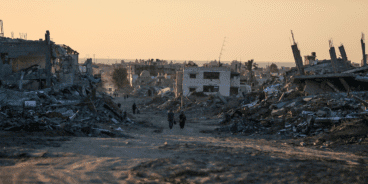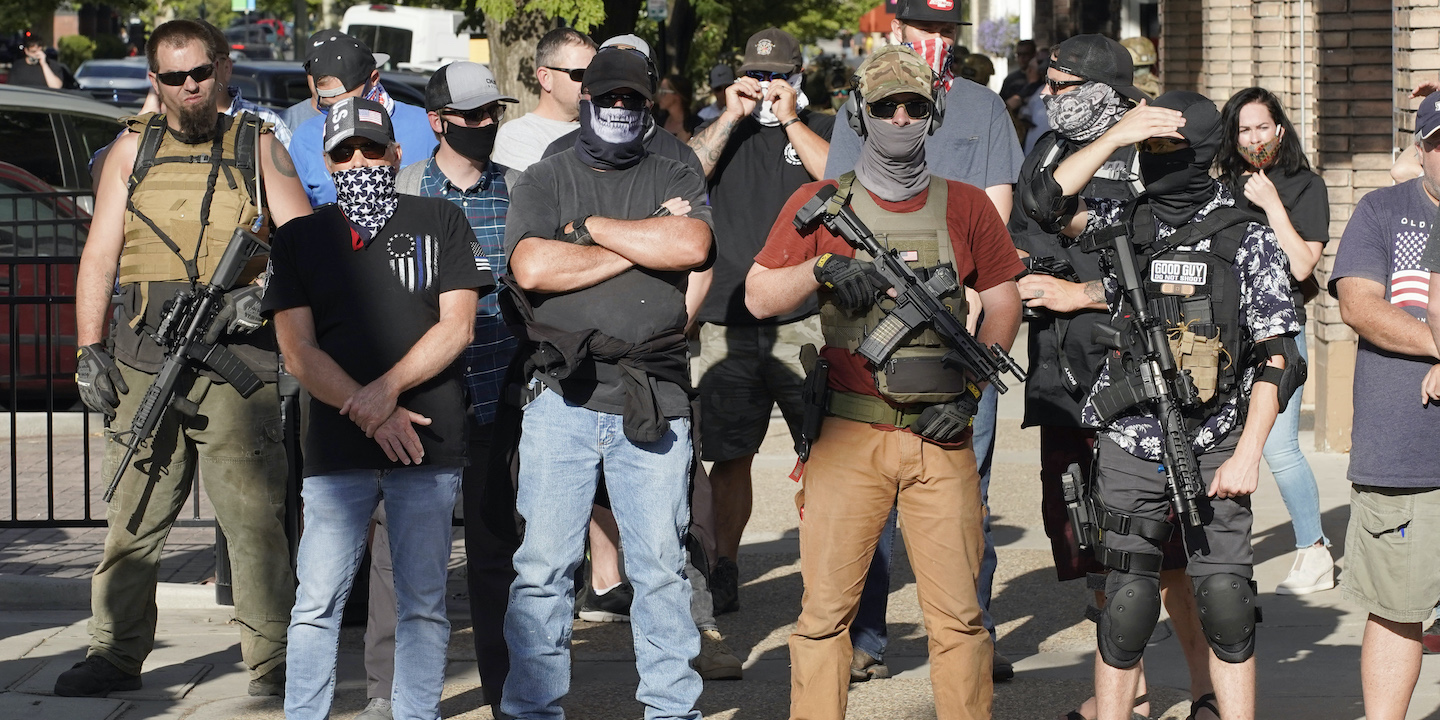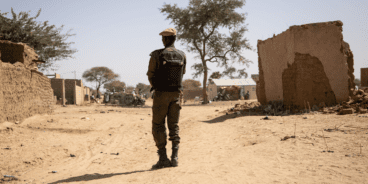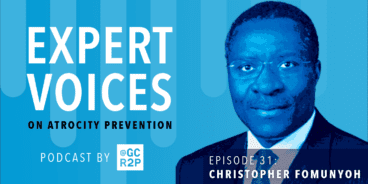

‘It Could Happen Here’: The US Election and the Threat of Violence
In June this year, for the first time in our history, the Global Centre for the Responsibility to Protect published an “Atrocity Alert” for the United States. That alert was issued just nine days after an unarmed Black man, George Floyd, was choked to death by police in Minneapolis. Floyd’s death led to massive protests in more than 100 US cities and towns, and some rioting. As we wrote at the time:
“While the murder of George Floyd in police custody does not constitute a mass atrocity crime, it has exposed deep divisions in US society. All law enforcement officials involved in the extrajudicial killing of civilians should be held legally accountable and punished to the full extent of the law. Crowd control measures deployed against peaceful protests must be consistent with international standards. The security forces must also strictly comply with the principles of necessity, proportionality, legality and precaution to help prevent any further deaths or serious injuries.”
Now the United States faces an even greater challenge. The election on 3 November is expected to be one of the most divisive and dangerous in US history. Since March the United States has not only endured the largest COVID-19 death toll in the world, but also crushing unemployment levels and a disturbingly fractured political discourse. While the structural problems in US society – such as its history of racial violence and overly-militarized policing – pre-date the presidency of Donald Trump, he has exacerbated them. Trump’s attempt to cast doubt over the legitimacy of the impending election, combined with his unwillingness to commit to a peaceful transfer of power, poses a threat to American democracy. Many Americans believe that existential issues of race, identity and civil rights are also on the ballot.
The Global Centre for the Responsibility to Protect was founded by individuals who had practical experience in the struggle to prevent atrocities, including General Romeo Dallaire, the commander of the failed UN peacekeeping operation in Rwanda during the 1994 genocide. Our mandate is to provide early warning and policy advice to governments and multilateral organizations – including the UN Security Council and Human Rights Council – regarding how to halt war crimes, genocide and crimes against humanity. Every day we study societies experiencing identity-based conflict and while we do not believe that the United States is on the verge of an outbreak of atrocities, some risk factors are evident. These not only include political polarization and the proliferation of hate speech on social media, but also the growth of violent extremist groups.
In particular, right-wing terrorists have dramatically increased their activities since Donald Trump became president. According to the US Department of Homeland Security’s own assessment, white supremacists were responsible for eight terrorist attacks between 2018-2019 (killing 39 people) and “remain the most persistent and lethal threat in the homeland.” Similarly, the Center for Strategic and International Studies has reported that 90 percent of all terrorist attacks and plots between January and May this year were perpetrated by far-right extremists. Most attacks were on individuals who were targeted because of their race, religion or ethnicity, although the recent plot by the right-wing Wolverine Watchmen militia to kidnap the Democratic Governor of Michigan, Gretchen Whitmer, shows that such groups are widening the scope of their targets.
Nevertheless, Jews and Black Americans remain the most common focus of right-wing hate groups. The FBI reported that in 2018 African Americans were the target of 47 percent of all hate crimes despite constituting only 13 percent of the population. The number of incidents has grown since then, including high-profile cases such as the February 2020 murder of a Black man, Ahmaud Arbery, while jogging through a predominately white neighborhood in Georgia. The persistence and regularity of fatal shootings of unarmed Black people by the police was the inspiration for the massive “Black Lives Matter” protests over the summer.
Similarly, while Jews are only two percent of the population, the Anti-Defamation League (ADL) identified 2,107 antisemitic incidents in 2019, the highest number since the ADL first began tracking such crimes four decades ago. These ranged from simple acts of vandalism, such as the spray-painting of swastikas on buildings, to deadly attacks targeting Jews. They included a December 2019 shooting at a kosher supermarket in New Jersey, and a machete attack on worshippers at a Hanukkah gathering in Monsey, New York, two weeks later. According to the FBI, there has also been a notable increase in hate crimes targeting LGBTQIA+ people. Attacks, both verbal and physical, against Asian Americans have also increased since President Trump began publicly blaming China for the COVID-19 pandemic.
Part of the reason for this surge in violence is because Donald Trump’s 2016 and 2020 election slogan, “Make America Great Again,” has been interpreted as a historic call to arms by many on the extreme right. In 2016, for example, the Ku Klux Klan explicitly linked Trump’s election slogan to their own campaign to allegedly return the United States to being “a White Christian Republic.” Others, such as the self-declared “western chauvinists” of the Proud Boys, view Trump as a guardian of civilization.
The United States’ permissive gun laws mean that many of these groups are frighteningly well-armed, with access to weapons that are illegal in most countries. “Open carry” laws in many states allow citizens to display these guns in public, while the Firearm Owners Protection Act of 1986 prohibits the federal government from establishing a national registration system. Because of this legislation no one knows how many AR-15 semi-automatic rifles are currently in circulation in the United States, but it is widely accepted that somewhere in the vicinity of 15 million military-style rifles are privately owned. As a result, when far-right extremists parade through American towns they are not just waving Confederate flags and wearing “MAGA” hats, but are often carrying weapons of war.
Meanwhile, prejudices that were once privately whispered are now publicly proclaimed and amplified online. Most white supremacists organize and recruit via the internet and several of them overlap with those who embrace QAnon and other conspiracy theories in chatrooms on 4chan, 8chan and other sites. The Boogaloo movement, whose adherents embrace the idea of a second civil war in the United States, began online. Many online extremists are also fervently pro-Trump – a reality that explains his reluctance to unequivocally condemn them. Despite the fact that the QAnon conspiracy theory has already inspired violence, Trump has described its followers simply as “people that love our country.” Similarly, when explicitly asked to reject the Proud Boys, Trump said that they should “stand back and stand by” instead, a statement that was welcomed by the group.
Another significant threat emanates from the public call by President Trump “urging my supporters to go into the polls and watch very carefully.” Direct voter intimidation and electoral interference are illegal under US law. However, in states with “open carry” laws there is a fear that Trump’s most fanatical supporters, including far-right militias, will gather near polling places and create an environment intended to discourage Democratic Party supporters from voting. There is a long history of attempts to suppress the vote of African Americans and other people of color in the United States, and it is hard to imagine a free and fair election taking place if the Proud Boys, Wolverine Watchmen or other extremists are permitted to rally outside polling places and conduct “voter monitoring.” Remarkably, with the election just days away, the courts in Michigan are still in the process of deciding whether voters can also be permitted to carry guns inside polling places.
There is also a threat of Trump refusing to accept the election result if he loses. Four years ago, in November 2016, Donald Trump became president after winning a majority of votes in the country’s Electoral College. However, he later falsely claimed that he also won the popular vote, “if you deduct the millions of people who voted illegally.” This has been an enduring message of Trump’s – a false claim that millions of Mexicans and other illegal immigrants have voted in US elections. In relation to 3 November, Trump has already declared that “the only way we’re going to lose this election is if the election is rigged.” If Trump refuses to accept defeat, some right-wing extremist groups may declare that the election has been “stolen” and use it as a pretext for violence.
There is also a significant threat if Trump wins on 3 November. Trump’s 2016 election victory resulted in massive protests in many American cities by Democratic Party supporters, women’s groups, Black Lives Matter, LGBTQIA+ activists and the progressive movement more generally. Similar protests in 2020 are likely to be seen as deliberately provocative by both Trump and his supporters. For example, President Trump’s response to the mainly peaceful Black Lives Matter protests across America this summer was to consistently demonize the protesters. The result, as we wrote in June, was that:
“While police in some cities have used community engagement tactics in an attempt to quell unrest, in many cities the police, state militias and the national guard have responded with disproportionate force. This has included the reckless use of rubber bullets and tear gas to try to disperse largely peaceful crowds.”
Some Trump supporters, white supremacists and other extremists also took matters into their own hands, threatening or attacking protesters themselves. According to the University of Chicago’s Project on Security and Threats, there were 104 incidents where people deliberately drove their cars into protests and protesters between May and September this year. This resulted in a number of serious injuries and two deaths. Although there is scant evidence of “Antifa” or any organized far-left groups planning to commit acts of violence, this could change if Trump is re-elected under dubious circumstances or if these attacks on protests and protesters resume.
For all these reasons, myself and other concerned observers believe that American democracy is facing an existential moment on 3 November. In our monitoring and advocacy work at the Global Centre we regularly call on political leaders in countries facing disputed and dangerous elections to respect the verdict of voters, rigorously prosecute those who incite violence, and uphold their responsibility to protect all people within their country’s borders, regardless of ethnicity, race, religion, citizenship status or political affiliation. We should expect nothing less of the United States than what we expect of Burundi or Belarus.
The whole world will be watching on 3 November. This election will not only determine who becomes the next President of the United States, but whether the forces of prejudice, violent extremism and institutional injustice will be further empowered, or challenged and contained.
Related Content


Atrocity Alert No. 393: Burkina Faso, Venezuela and Ethiopia
